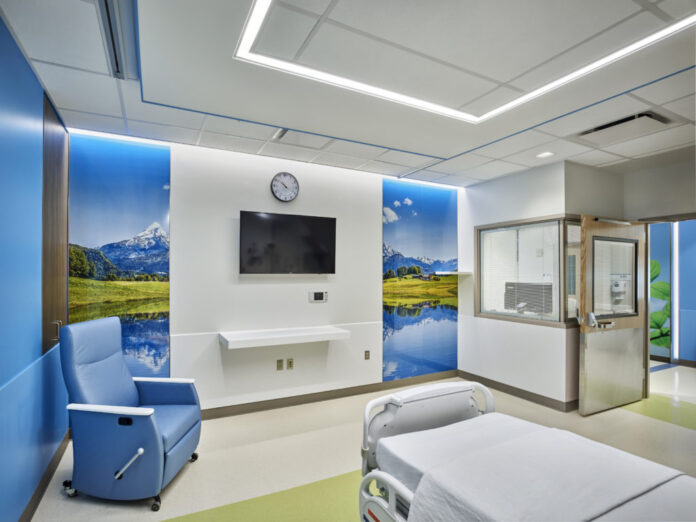
In medical spaces, the design and ambiance are not mere aesthetics. They play an important role in shaping the experience of patients, visitors, and staff.
Creating a space that fosters comfort and serenity can alleviate stress, enhance the healing process, and promote overall well-being.
Incorporating elements such as natural light, pleasant artwork, and carefully chosen color schemes contribute to a supportive environment that aids in both the physical and mental recovery of patients.
The psychology of color is particularly relevant in the medical setting. Colors can evoke strong emotions and reactions, and their use within a medical space must be carefully considered to align with the intended ambiance.
For instance, soft blues and greens often create a calming atmosphere, helping patients feel more relaxed, while brighter hues might energize staff and improve efficiency.
Understanding the impact of color on human psychology enables healthcare providers and designers to create spaces that not only look appealing but also serve a functional and therapeutic purpose.
Understanding Color Psychology
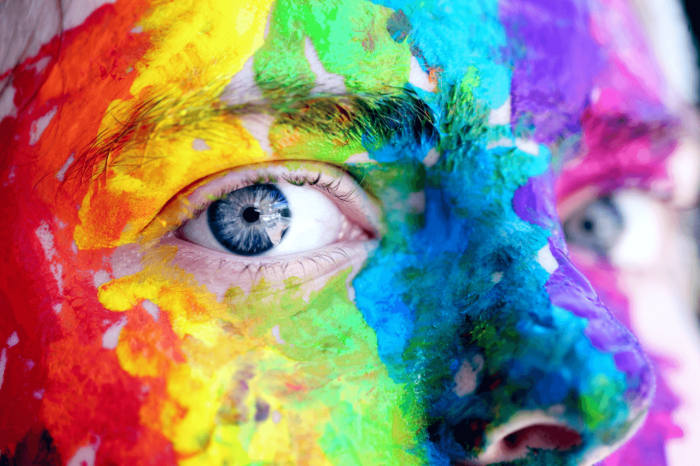
Color psychology is the study of how colors can affect human emotions, thoughts, and behaviors. Various hues can evoke specific feelings or reactions; for example, red might stir up excitement or urgency, while blue often conveys tranquility and trust. This connection between color and psychological response is not merely a modern concept; it has historical roots, tracing back to ancient civilizations where colors were used for their supposed healing properties or symbolic meanings.
In a complex environment like medical office space, understanding color psychology becomes essential. It’s not simply about choosing a pleasing palette; the color choices must align with the needs and purposes of different spaces within the medical facility.
Soothing colors might be used in patient rooms to encourage relaxation, while more stimulating colors might be suitable in work areas to enhance focus and energy. The thoughtful application of color, guided by the principles of color psychology, can thus create an environment that supports the mental and emotional well-being of both patients and staff.
The Importance of Color in Medical Spaces
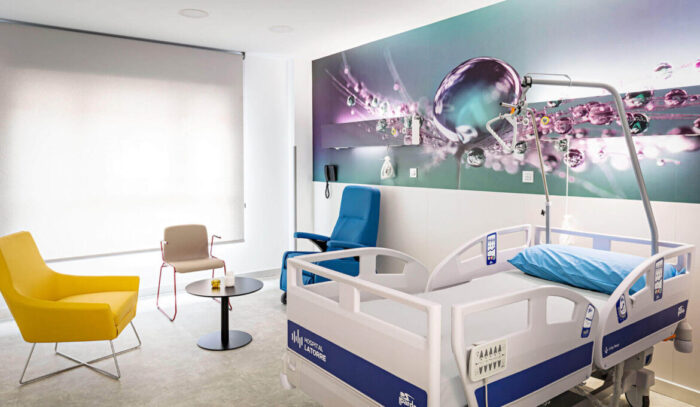
Thoughtful color choices can create a healing environment that reduces anxiety and fosters a sense of safety and comfort. For example, soft shades of blue and green in patient rooms may provide a calming effect, aiding in relaxation and recovery, while warm tones in waiting areas can create a welcoming atmosphere.
The appropriate use of color can also contribute to staff efficiency and morale. In areas where focus and precision are paramount, such as surgical units or laboratories, color can be utilized to enhance concentration and minimize fatigue.
Conversely, communal spaces might benefit from uplifting hues that promote collaboration and positivity. The integration of color psychology into medical spaces is not merely an aesthetic consideration; it’s a strategic approach that can contribute to the overall success and human-centered design of the healthcare environment.
Practical Applications
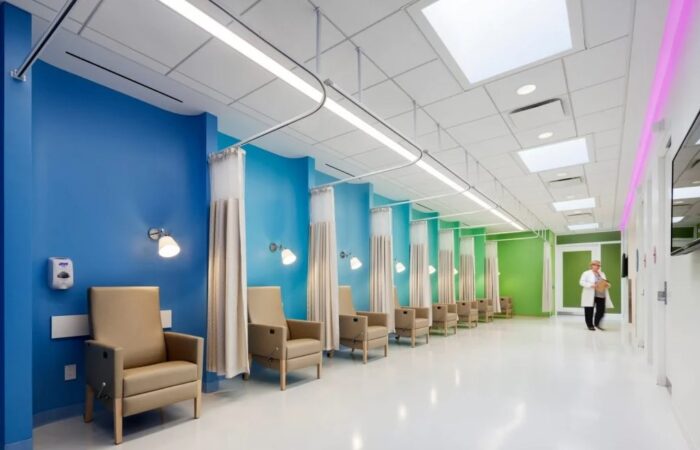
In medical offices, practical applications of color extend to various departments and functions. Selecting color schemes for different areas requires consideration of the unique needs and goals of each space.
Pediatric wards, for example, may benefit from bright and cheerful colors to create a more engaging and less intimidating environment for children. Conversely, colors in surgical units or examination rooms should be chosen to minimize eye strain and enhance concentration for medical professionals, often leading to the selection of muted, calming shades.
Materials and finishes are another essential aspect of practical applications. The chosen colors must be applied with suitable materials that comply with hygiene and safety regulations.
For instance, easily cleanable surfaces that resist staining while maintaining the integrity of the color are imperative in high-traffic areas. Integrating color schemes with functional design elements, such as lighting and furniture, ensures a cohesive and effective environment that aligns with the overall mission and brand of the medical facility.
Challenges and Considerations
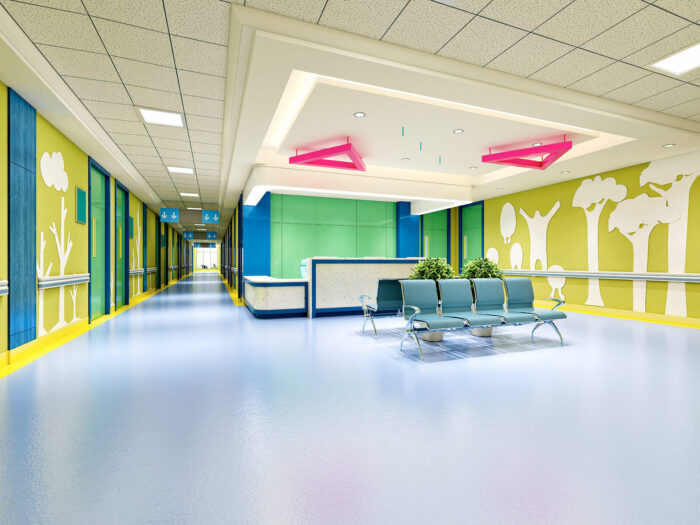
Implementing color psychology in medical office spaces is not without its challenges. One significant obstacle is balancing the emotional impact of colors with practical requirements such as hygiene, visibility, and regulatory compliance. Choosing the right shade might have unintended psychological effects on certain patients, and the same color might not resonate the same way across different cultures. Thus, a comprehensive understanding of the demographic and individual needs of the patient population is critical.
Trends and preferences in interior design change, and what is considered modern and appealing today may become dated in the future. Medical facilities must also consider longevity and durability in their color choices, ensuring that materials and finishes can withstand rigorous cleaning and usage over time without losing their aesthetic appeal.
Engaging with professionals who specialize in healthcare design and collaborating across disciplines can mitigate these challenges, resulting in a balanced and effective color scheme that serves both the functional needs and psychological well-being of all those who interact with the space.
The marriage of color and psychology in medical care is not just a trend, but a lasting shift towards more empathetic and human-centered healthcare environments. By understanding color psychology and carefully considering its applications, challenges, and cultural implications, healthcare providers can create spaces that not only meet functional requirements but also contribute to the overall well-being and comfort of patients and staff.








